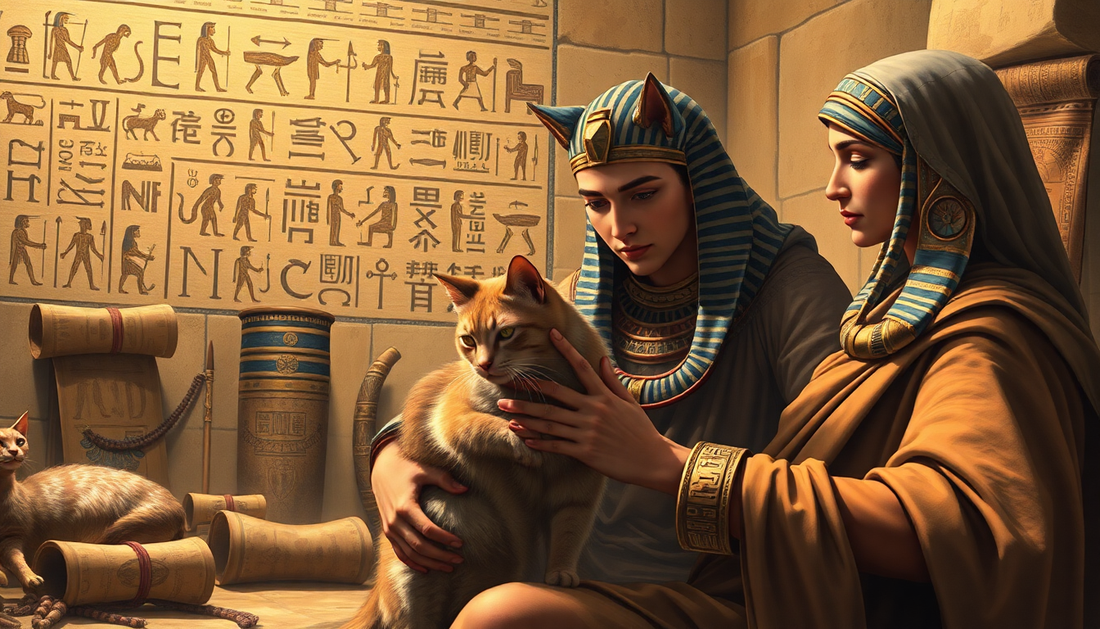
The Fascinating History of How We Domesticated Cats
Share
Have you ever wondered how our beloved feline companions came to be part of our lives? The story of cat domestication is a fascinating one, filled with twists and turns that stretch back thousands of years. As a proud owner of a furry friend from the WellDonePet shop, I'm excited to share this captivating tale with you.
It all began in the ancient world, where cats were revered as sacred animals in many cultures. In Egypt, for example, the goddess Bastet was often depicted with a cat's head, symbolizing the animal's importance in their society. These early relationships between humans and cats were likely driven by the cats' natural ability to control rodent populations, which was crucial for the protection of valuable grain stores.
Over time, as humans transitioned from hunter-gatherers to more settled agricultural communities, the bond between cats and people deepened. Cats proved to be invaluable allies, keeping pesky rodents at bay and even providing companionship. This mutually beneficial relationship led to the gradual domestication of the cat, as people began to selectively breed the most docile and sociable felines.
One of the most fascinating aspects of cat domestication is the genetic changes that occurred as a result. Through selective breeding, cats became smaller, more playful, and more tolerant of human interaction. Their facial features also evolved, with larger eyes and rounder heads becoming more common. These physical changes were accompanied by behavioral adaptations, as cats became more adept at reading human cues and responding to our needs.
Interestingly, the process of cat domestication was not as straightforward as that of other domestic animals, such as dogs or horses. Cats maintained a certain level of independence and autonomy, even as they became more integrated into human societies. This independent streak is often reflected in the personalities of our modern-day feline friends, who can be both affectionate and aloof, depending on their mood.
As we fast-forward to the present day, it's clear that cats have become an integral part of our lives. They provide companionship, comfort, and even therapeutic benefits, and their popularity as pets continues to grow. In fact, it's estimated that there are over 600 million domestic cats worldwide, making them one of the most widely kept animals on the planet.
But the story of cat domestication doesn't end there. Researchers are constantly uncovering new insights into the evolution and behavior of our feline friends, shedding light on the deep-rooted connection between humans and cats. From the ancient temples of Egypt to the modern-day cat cafes, the bond between our species has endured, and it's a relationship that continues to captivate and inspire us.
So, the next time you cuddle up with your furry companion from the WellDonePet shop, take a moment to appreciate the fascinating history that brought you together. It's a story that spans millennia and reflects the enduring appeal of these remarkable animals.
The Beginnings of Cat Domestication
The earliest evidence of cat domestication dates back to around 10,000 years ago, when cats were first observed living in close proximity to human settlements in the Middle East. These early feline companions were likely drawn to the abundance of rodents that thrived in the grain stores of ancient agricultural communities, and humans, in turn, welcomed the cats' pest control services.
Over the centuries, as human civilizations grew more complex, the relationship between cats and people evolved. In ancient Egypt, for example, cats were revered as sacred animals and were often mummified and buried alongside their human owners. The Egyptians even went so far as to create a goddess, Bastet, who was depicted with the head of a cat, further solidifying the animal's importance in their culture.
The Genetic Changes of Domestication
As cats became more integrated into human societies, selective breeding began to shape their physical and behavioral characteristics. Through this process, cats became smaller, more playful, and more tolerant of human interaction. Their facial features also evolved, with larger eyes and rounder heads becoming more common.
These genetic changes were accompanied by behavioral adaptations, as cats became better able to read human cues and respond to our needs. For example, domestic cats developed a greater capacity for social interaction and a more docile temperament compared to their wild counterparts.
The Enduring Appeal of Cats
Today, cats remain one of the most popular pets in the world, with an estimated 600 million domestic cats worldwide. Their enduring appeal can be attributed to a variety of factors, including their independent nature, their ability to provide companionship and comfort, and their therapeutic benefits.
Researchers continue to uncover new insights into the evolution and behavior of domestic cats, shedding light on the deep-rooted connection between humans and these remarkable animals. From the ancient temples of Egypt to the modern-day cat cafes, the bond between our species has endured, and it's a relationship that continues to captivate and inspire us.
